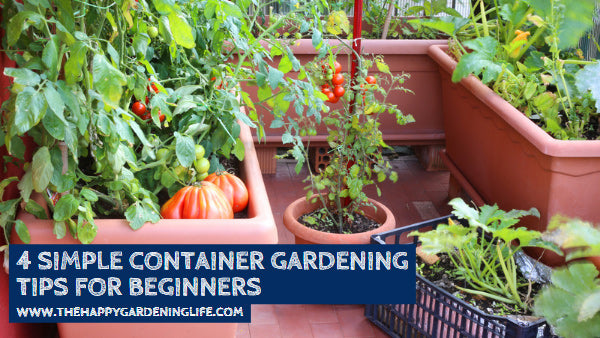
4 Simple Container Gardening Tips for Beginners
Share
 Many new gardeners are confused and undecided on how to begin their own garden at home. If you’re still a beginner, one of the best ways to get started is with container gardening.
Many new gardeners are confused and undecided on how to begin their own garden at home. If you’re still a beginner, one of the best ways to get started is with container gardening.
Container gardening is a very useful and efficient way to grow food because it doesn’t require a lot of money, time, and energy. With this method, you won’t have to amend your soil every single time–and weeds are also less likely to grow. These two advantages are ideal especially for new gardeners who are living in urban areas.
Moreover, container gardening lets you experiment with your own creativity. You can make your garden more stylish simply by choosing pots and plants that match your personal style. You can also position your garden plants on the balcony and windowsills for that added effect.
So to help you get started, check out these essentials tips for container gardening below. Don’t forget to share this blog post on Facebook, Twitter, and Pinterest!
Ultimate Beginner Container Gardening Tips
1. Consider Location
Your first consideration for any garden project should be location: specifically, sunlight and exposure. Container-grown plants tend to dry and wilt more quickly than plants in the ground. Once you’ve identified where you intend to put your containers, observe the amount and strength of sunlight.
2. Pick Your Plants
Many edible plants can be grown in containers. Potted herbs are a popular choice and can be placed in a sunny window or even on a patio. Herbs are compact so they can easily be grown in a small space. Try chives, mint, basil, parsley, rosemary, sage, thyme, and more! You can even grow fruit trees in containers. Dwarf varieties of trees such as orange, fig, apple, and pear can (with some effort) grow in large containers. These usually need to be protected or brought inside during the winter. If vegetables are what you want, try greens such as arugala, lettuces, swiss chard, and spinach. Smaller varieties of tomatoes, peas, pole beans, bush zucchini, and peppers can also be grown successfully with some staking or trellis for them to climb.
3. Choose Your Containers
There are numerous types of containers, each with pros and cons. On one end of the financial spectrum you have plastic containers which are light and cheap, but might not capture the aesthetic you’re going for. Compare that to stone or marble, which are gorgeous and sturdy, but are as hefty in price as they are to move around the garden. You want a vessel that has enough space for the roots of your plant, proper nutrients to feed your plant, and drainage holes to allow for excess moisture to flow out to prevent waterlogged roots. Additionally, consider where this container is going. Be aware that some containers such as terra cotta can retain heat quickly, so extra watering may be necessary.
4. Maximize Drainage
Over- or under-watering is the number 1 cause of plant failure—and growing in containers exacerbates the problem. Plants must never sit in accumulated water. If you’re using alternative containers, make sure there’s ample drainage. This can be a real challenge if, for example, you’re using an old enamel washbasin, glass jar or china soup tureen. If possible, drill or punch several holes in the bottom of your container. If drilling holes in the container doesn’t seem like such a good idea, then place nursery pots inside the planter (instead of planting directly in it) and be sure to pour out the excess every time you water.
Article Source: sparkpeople.com
